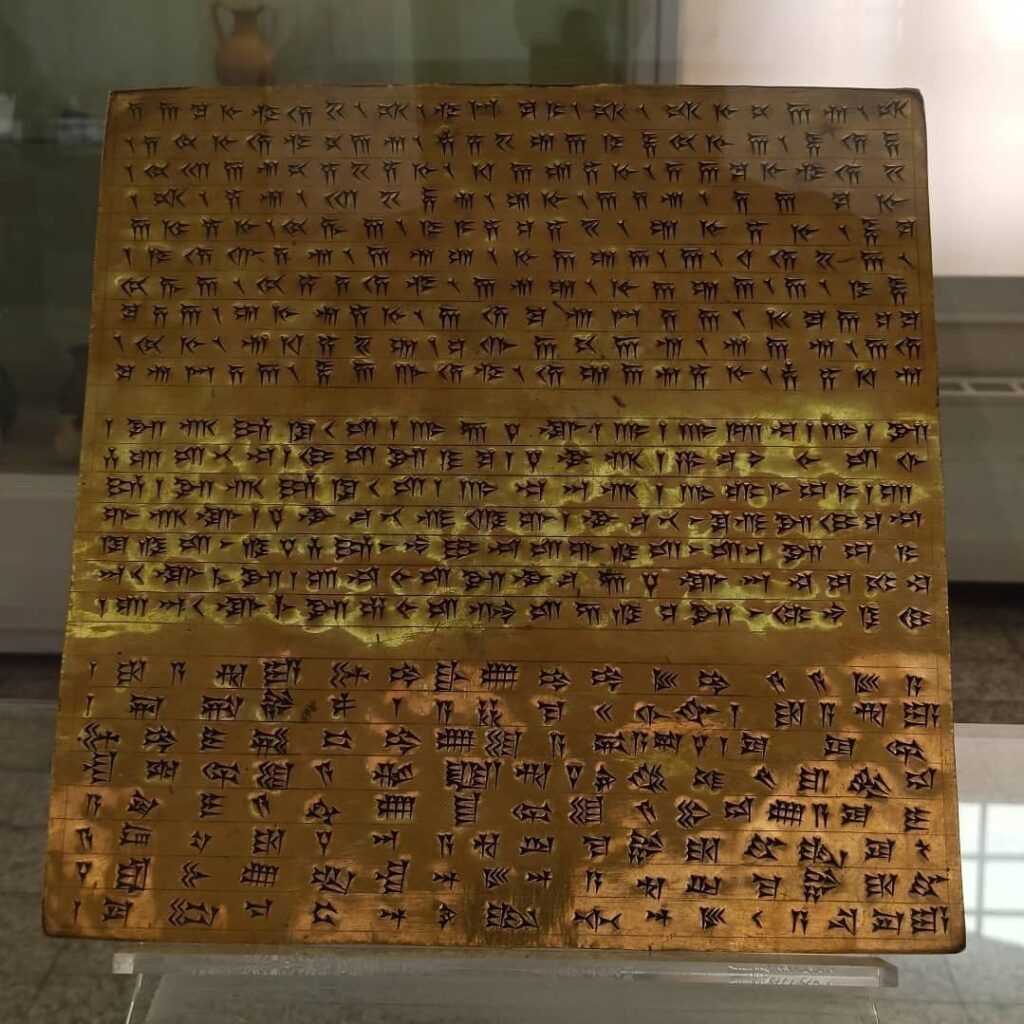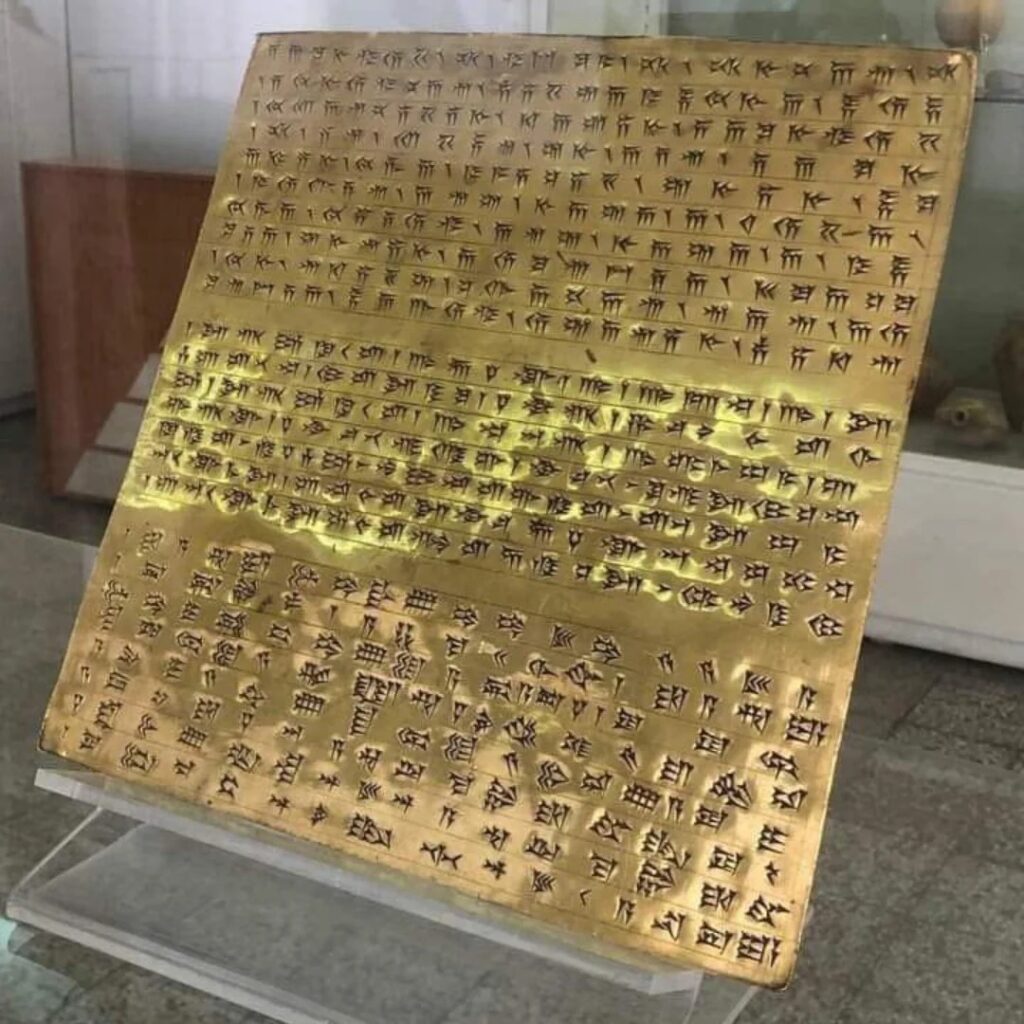Table of Contents
ToggleIntroduction to the Gold Plaque of Darius the Great
The gold foundation plaque of Darius the Great (550–486 BC) is a rare and invaluable relic from the height of the Achaemenid Empire. Discovered during excavations at the Apadana Palace in Persepolis, Iran, this plaque—along with its counterparts—offers a window into the cultural, political, and architectural achievements of one of history’s most influential civilizations.
Discovery and Context
Excavation and Contents
Decades ago, archaeologists unearthed two gold and two silver plaques buried in stone boxes beneath the foundations of the Apadana Palace. These deposits were accompanied by coins and deliberately concealed, functioning as a time capsule left by the Achaemenid rulers. This practice of embedding foundation deposits was common in ancient Persia, symbolizing a divine blessing for the structures and ensuring that the legacy of the builders endured.
Historical Significance of Persepolis
Persepolis, the ceremonial capital of the Achaemenid Empire, was designed to showcase the grandeur and power of Persian rulers. Built under the reign of Darius the Great, the Apadana Palace was a monumental hall used for receptions and official ceremonies. Its construction, commemorated by these plaques, reflects the wealth, engineering expertise, and cultural sophistication of the empire.

The Inscriptions: A Multilingual Legacy
Languages and Messages
The plaques are inscribed in Old Persian, Elamite, and Babylonian—languages that highlight the vast multicultural expanse of the Achaemenid Empire, which stretched from the Indus Valley to the Balkans. The inscriptions detail the construction of the palace, the greatness of Darius, and the unity of his empire.
Cultural Implications
The use of multiple languages demonstrates Darius’s efforts to communicate with and legitimize his rule across diverse populations. It reflects the inclusive administrative policies of the empire, which allowed subject peoples to maintain their languages and traditions while contributing to a larger imperial identity.
Symbolism and Purpose of the Foundation Deposits
Ceremonial Significance
The burial of the plaques and coins was a sacred act. In Persian tradition, foundation deposits symbolized the king’s piety and sought the favor of the gods for the success and longevity of the construction. These deposits also served as records for future generations, affirming the achievements of Darius’s reign.
Preservation of Legacy
By including coins alongside the plaques, the Achaemenids reinforced the idea of material prosperity and the empire’s economic strength. The practice of leaving such deposits ensured that their historical narrative would remain intact, even thousands of years later.

Architectural Grandeur of the Apadana Palace
The Apadana Palace was a masterpiece of ancient Persian architecture. With its massive stone columns, elaborate reliefs, and sprawling layout, the palace embodied the Achaemenid ideals of beauty, order, and power. The construction of such a grand structure was a testament to the empire’s engineering skills and its ability to mobilize resources and labor from across its territories.
Modern Significance and Legacy
Insights into Ancient Persia
The discovery of the gold and silver plaques has provided historians and archaeologists with critical information about the Achaemenid Empire. They offer a glimpse into the ceremonial practices, linguistic diversity, and administrative sophistication of the time.
Preservation of Cultural Heritage
Today, these plaques and the ruins of Persepolis remind us of the importance of preserving cultural heritage. They symbolize the enduring human desire to communicate across generations and leave a legacy for the future.
Conclusion
The gold foundation plaque of Darius the Great is more than a mere artifact—it is a testament to the vision and accomplishments of one of history’s most powerful empires. Through its inscriptions, craftsmanship, and intentional burial, it continues to narrate the story of a civilization that valued its multicultural identity, architectural innovation, and connection to the divine. As we uncover and study these treasures, we gain deeper insights into the past and the timeless human pursuit of immortality through legacy.
